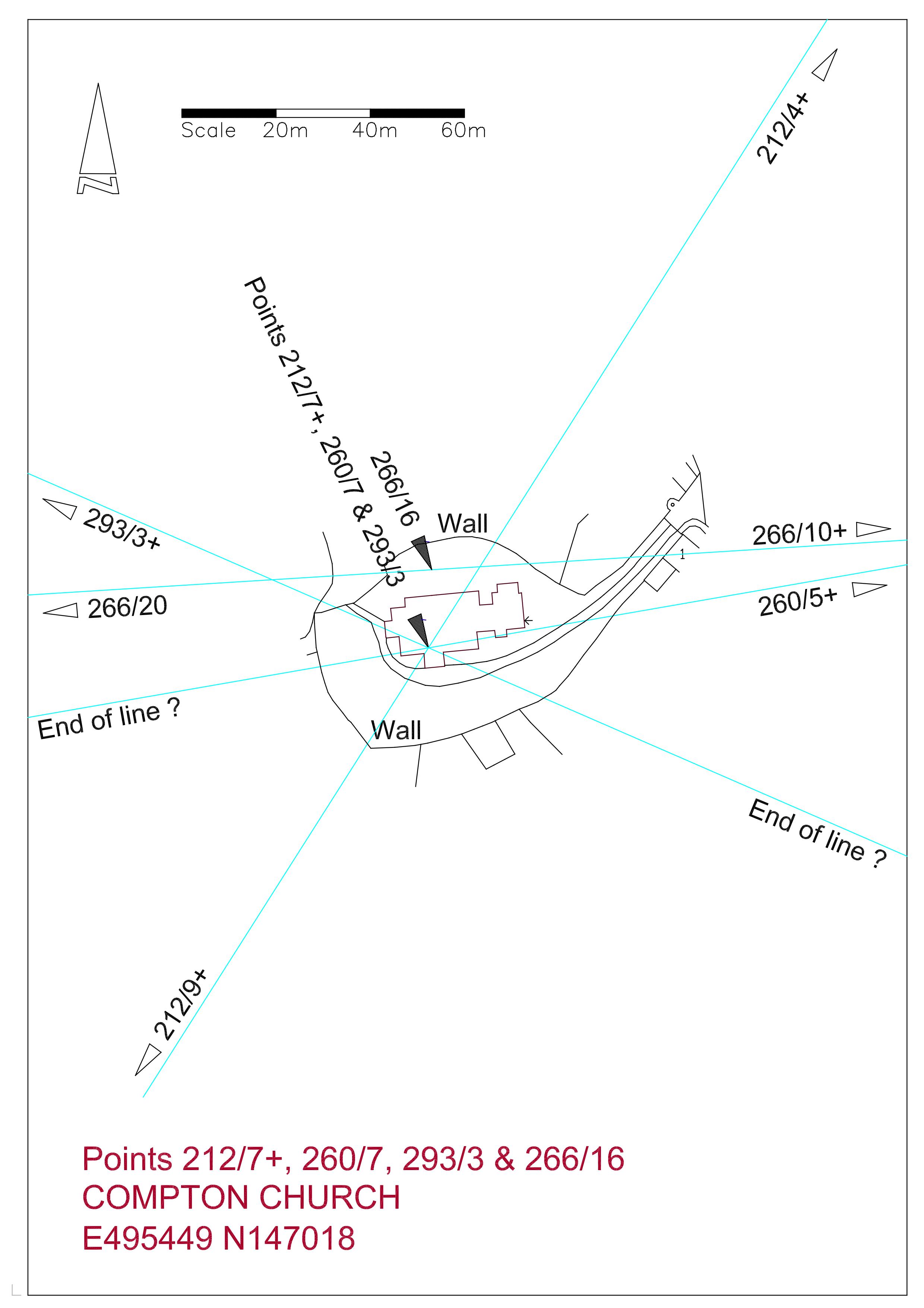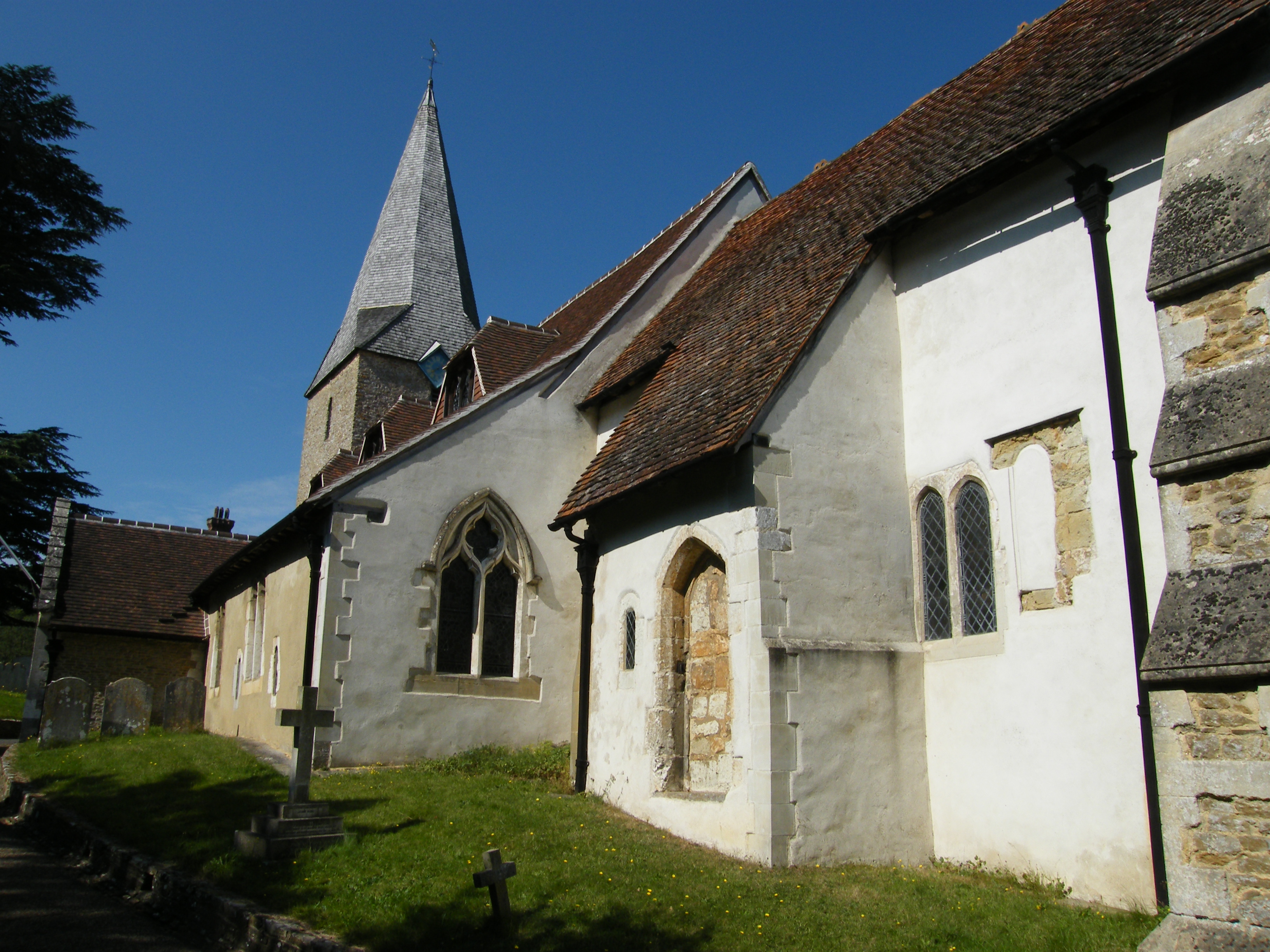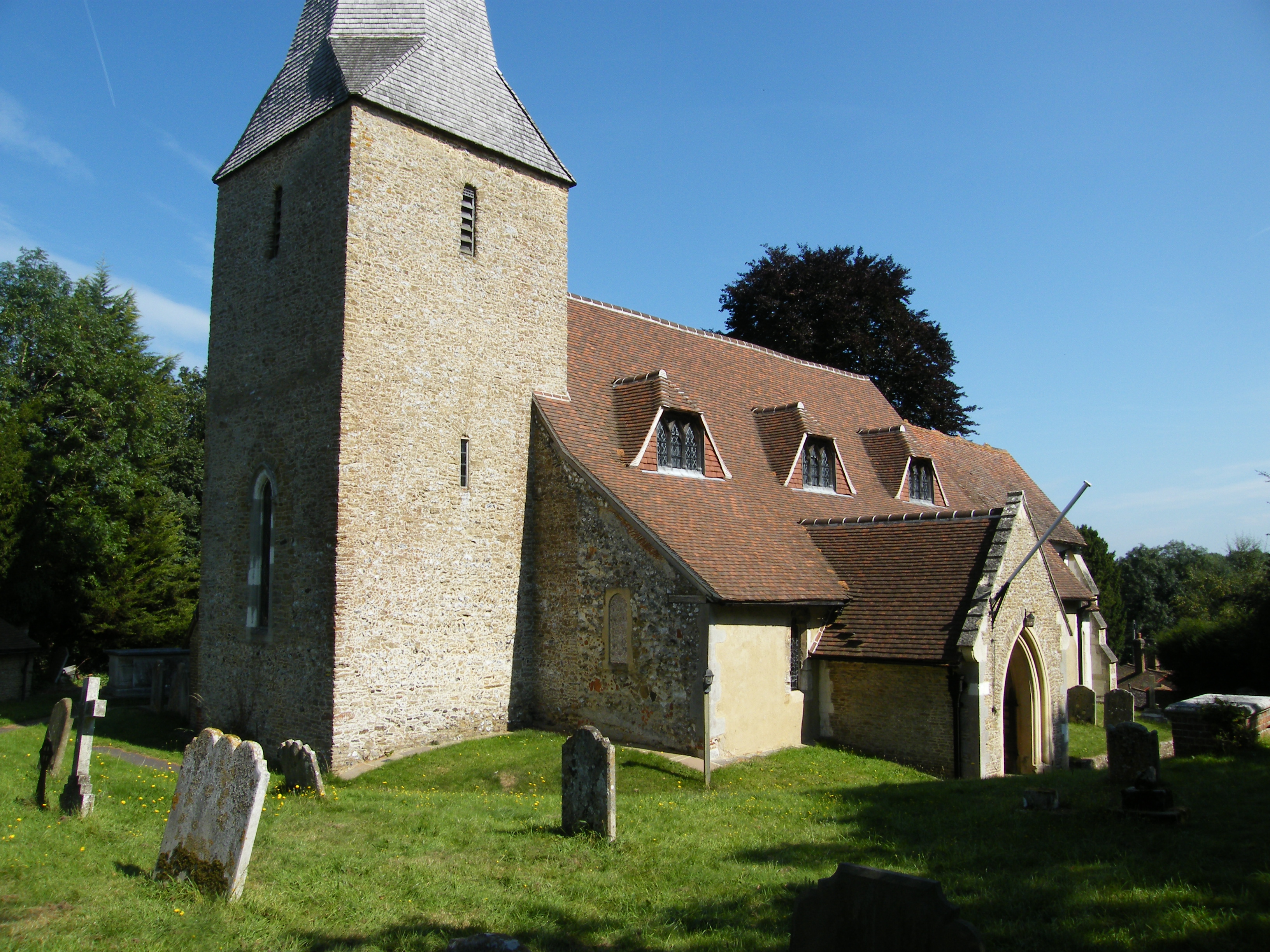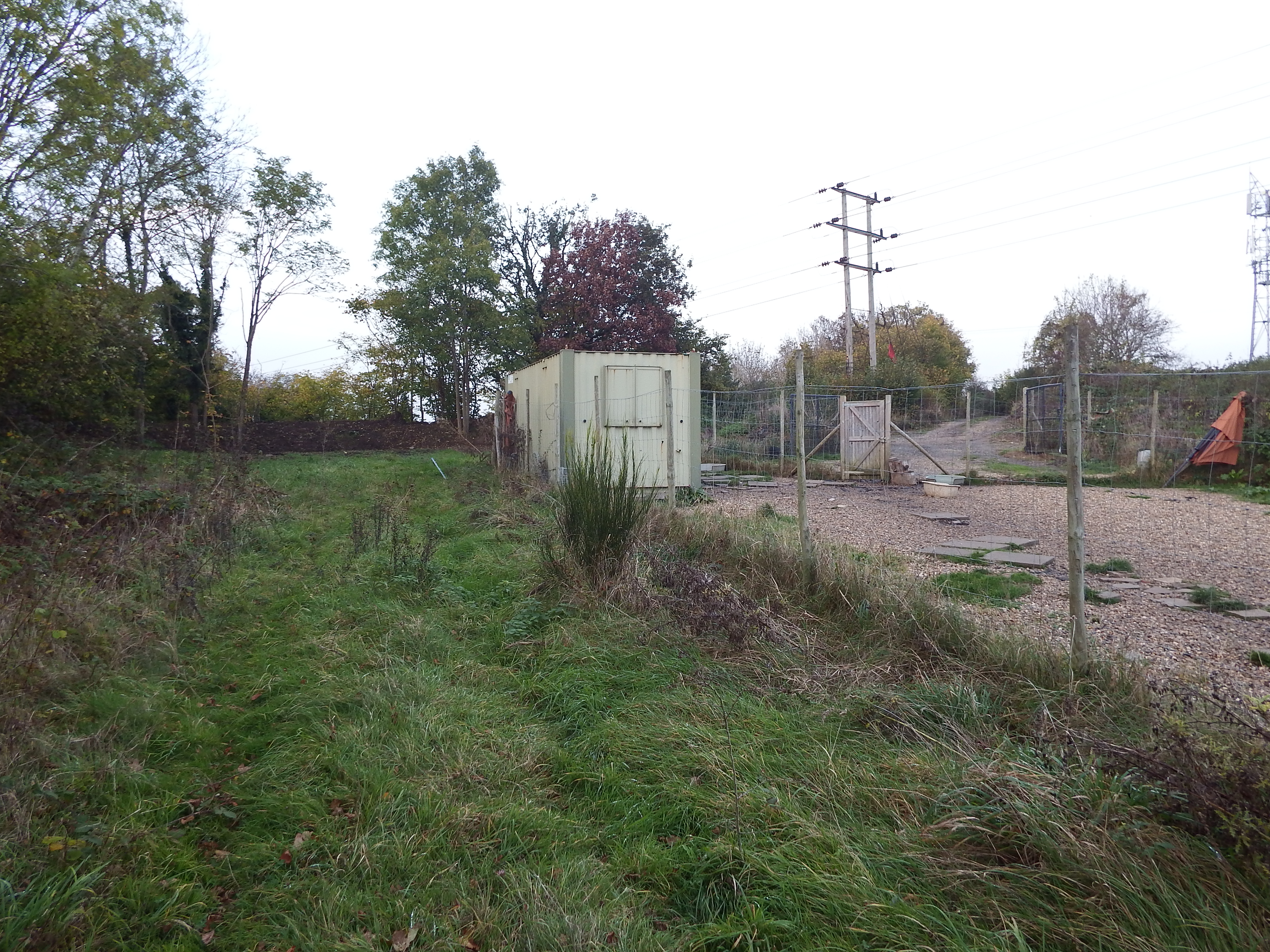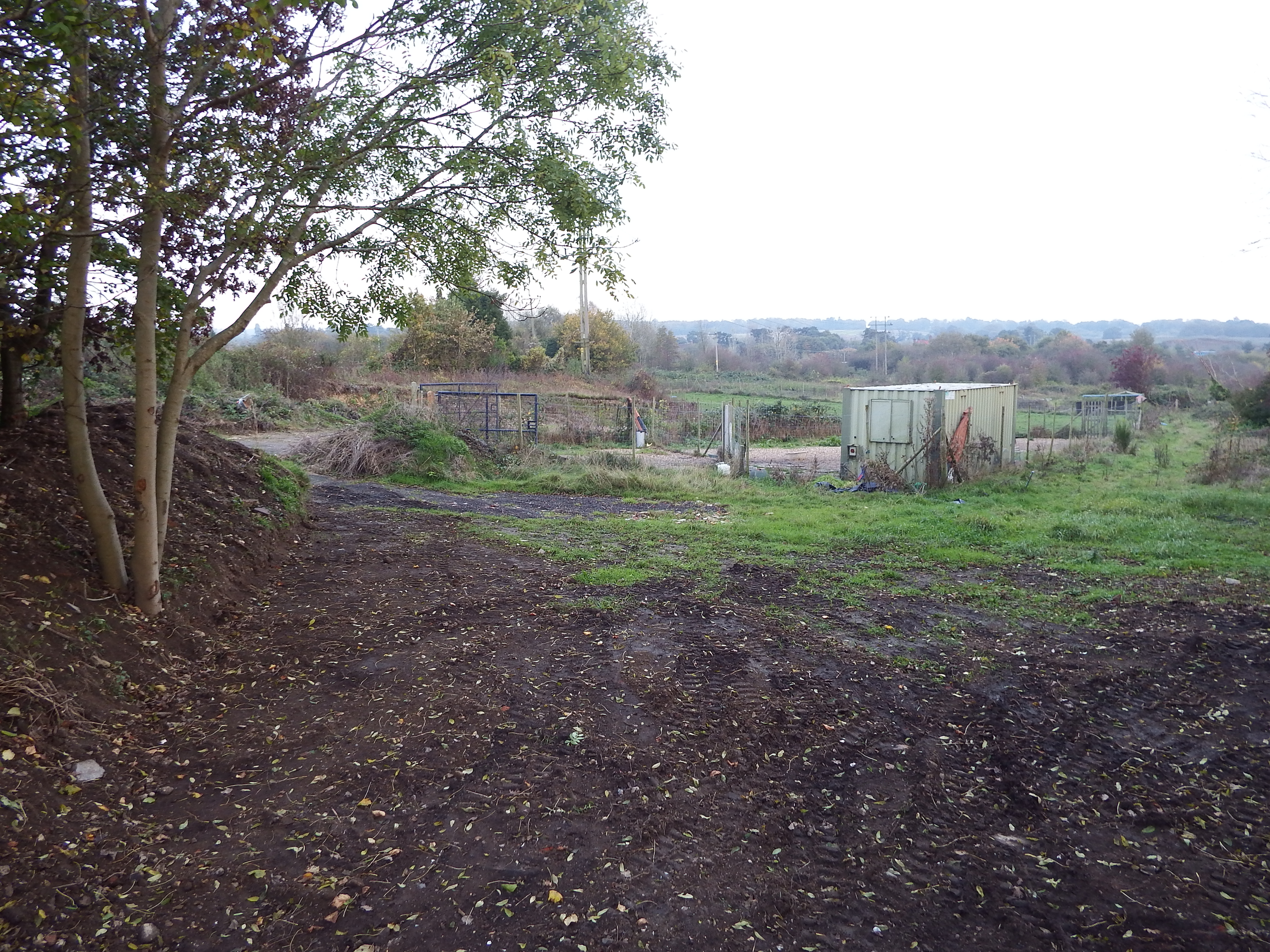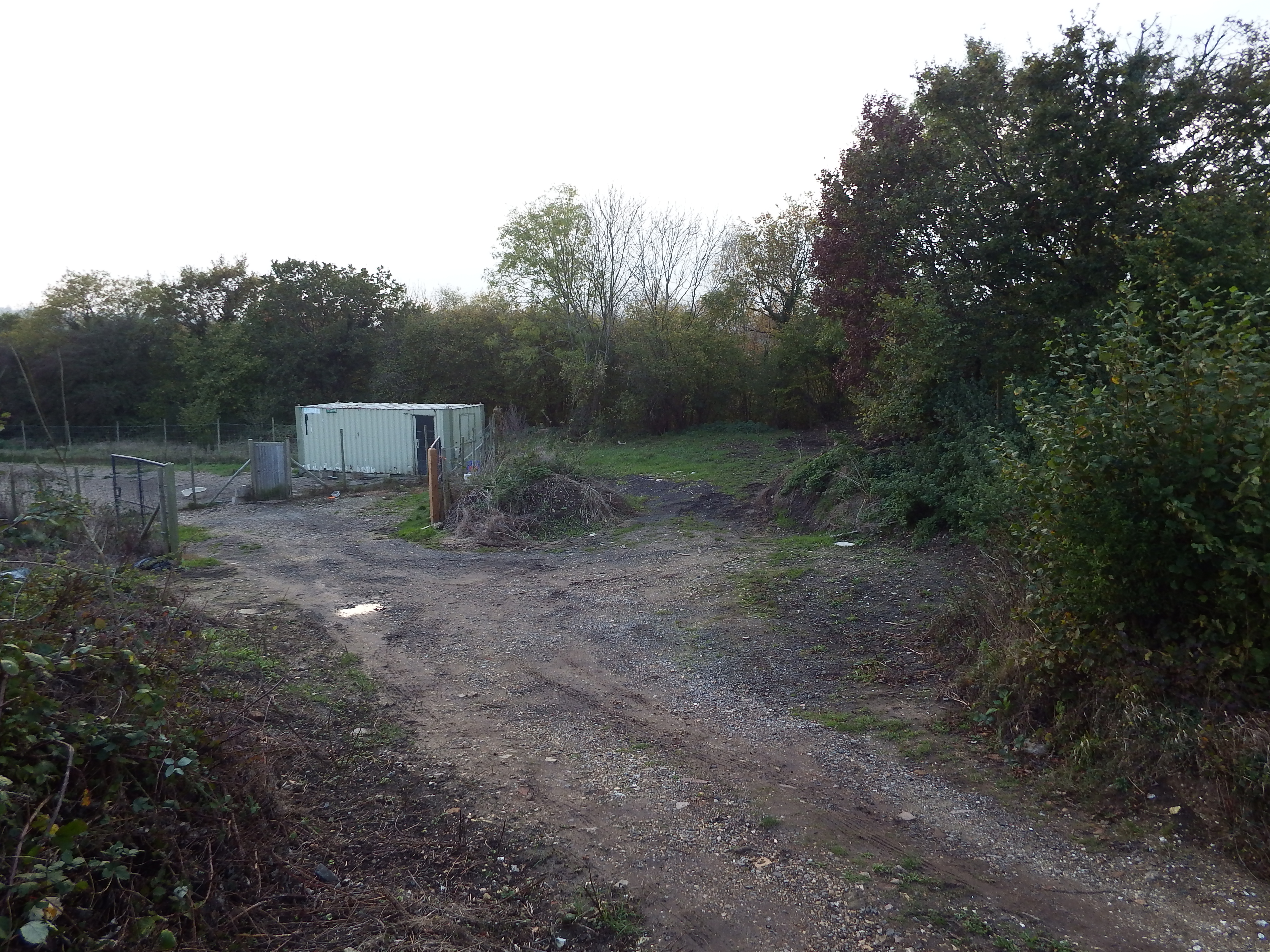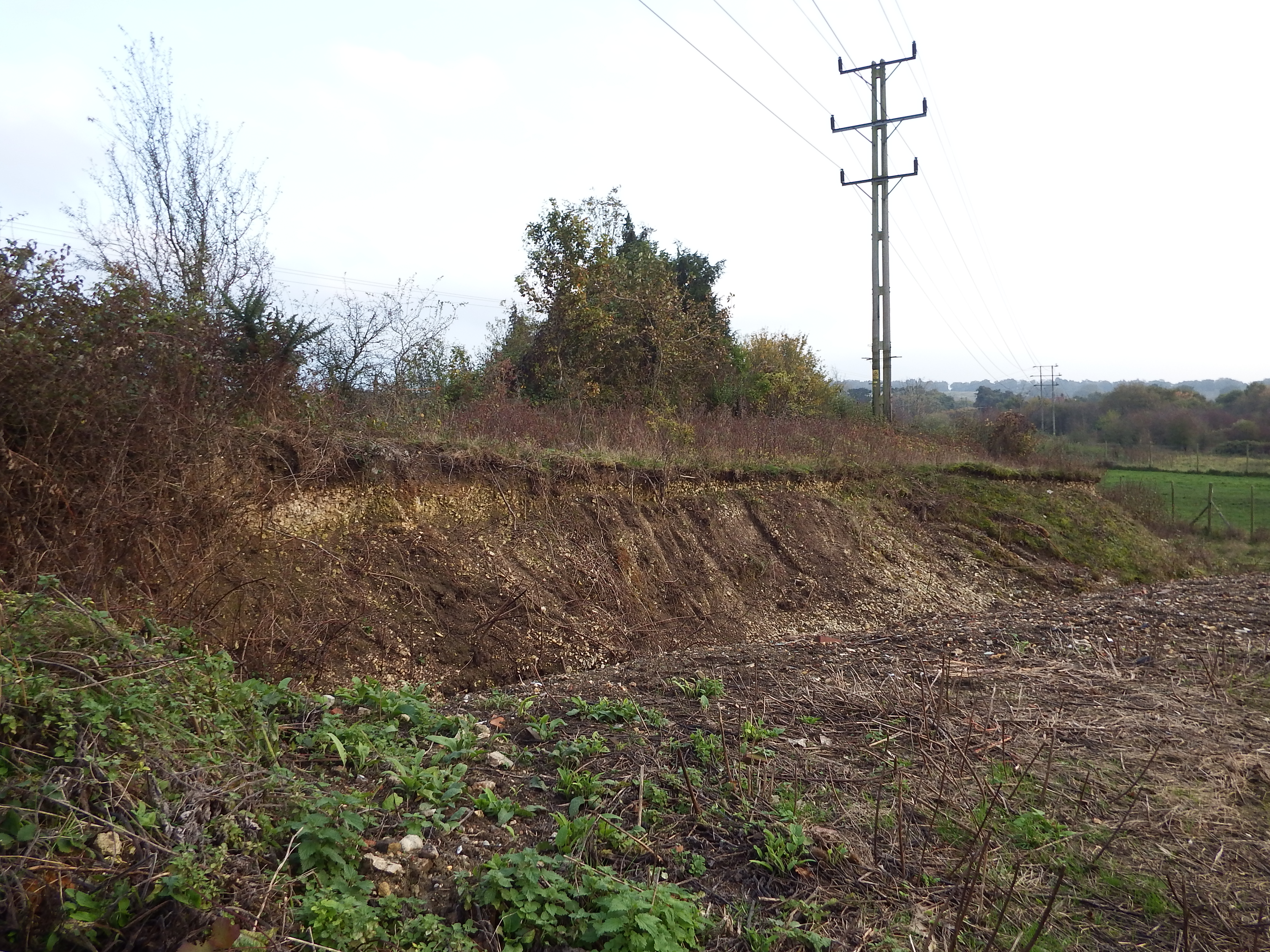I now turn my attention to one of the most interesting sites – the church of St Nicholas in the village of Compton.
The church is mainly Norman in construction with a Saxon tower to the West end. This church is unique in having a two-storey sanctuary above the chancel built in the 12th century. The purpose of this arrangement is a puzzle. The Saxon wall to the north side of the chancel has a small window believed to have belonged to a hermit’s cell.
212_7+ Compton Church212_7-compton-church-rev
Uniquely there are four alignments passing through this site. Beginning with the FROWSBURY LINE; there are only three sites on this alignment. Starting at the church the line heads north-west at 293 degrees and passes through Frowsbury Barrow at just over 1.5 Druid Miles. In just under 1.5 DM it ends at the Ancient Monument sign marking the Hog’s Back Barrow. This barrow is also on the CROOKSBURY LINE. The churchyard at Compton is very roughly circular and it can be demonstrated that a circle of the same diameter as Frowsbury can be fitted within this area suggesting the possibility that the church is evolved from a similar site.
The COMPTON LINE passing through the church at 219 degrees mirrors the TYTING LINE, both being 30 degrees east and west of the SOUTH LINE. It is strange that the site to the north-east on the line is a medieval moat and the site to the south-west is a Victorian church, and yet the alignment of these sites is extraordinarily precise.
The ARTINGTON LINE through the body of the church also has dubious sites which need further research.
The fourth line, the DEERLEAP LINE at 260 degrees, has six points although one is a moat and another is a Victorian church, but once again the precision is exceptional. Refinement of this line brings it to the north side of the church but well within the churchyard. The distance from Deerleap Barrow to the churchyard is 16 Druid Miles.
In the above picture, three alignments meet inside the door from the porch.
